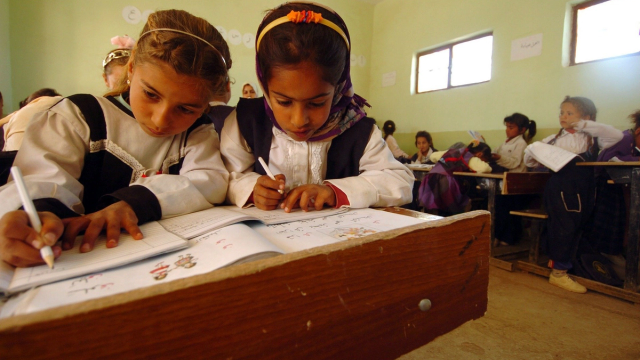Are Orphanages for Orphans?
By Duna Susie Lee , PhD Candidate in Biological Anthropology, Department of Anthropology, College of Arts and Sciences, New York University (NYU)
The answer to this question is no and no. To see the first no, try to answer a follow up question: Among 100 children in a residential institution, how many children are orphans? You may be surprised to learn that it is at most 20. Contrary to a common belief that institutionalized children do not have living parents, 80-90% of them have at least one living parent. Rather, the main reasons for institutionalization are predominantly poverty and social exclusion of vulnerable families. It is thus not surprising, but disturbingly so, that the number of institutionalized children is increasing in many low- to middle-income countries (e.g. a 75% increase 2005-2010 in Cambodia ), and may increase more in the wake of the natural disasters, disease epidemics, and refugee crisis, where many unaccompanied and separated children are at risk of entering institutional care or other forms of surrogate care.
But isn’t the orphanage a cost-effective way of providing care to the nearly 100 million children worldwide who, for several reasons, live outside of family care? Again, providing the second no to the title of this essay, institutional care is in fact multiple times costlier than family care, if we take into account both the direct costs of institutional care and the indirect costs due to its long-term detrimental effects on individual lives. Decades of research have shown that institutional care is detrimental to essentially all domains of child development, regardless of how much financial and human resources are invested in facilities. Offering hope, studies have found that earlier the children reintegrated to either native family or family-life alternative care better their recovery from the adversity.
This is why global agencies dedicated to child well-being, such as UNICEF and Save the Children, advocate deinstitutionalization, and transitioning away from traditional systems of isolated, institutional care, to supporting family-based nurturing care within the community. And this year, the MacArthur Foundation’s 100 & Change challenge recognized deinstitutionalization as one of the top eight pathways that “promises real and measurable progress” in solving a critical, global problem. If selected as a final winner, Catholic Relief Services, in partnership with Lumos and Maestral International, will invest $100 million to change the way society cares for children outside of family care. This chance could mean a 10-year acceleration in the achievement of their goal to end institutional care by 2050.
To achieve the transformation described above, international workers in early childhood development (ECD) recommend four key changes.
- Advocate family-based nurturing care as the best environment for ECD : We now have strong evidence that family-based nurturing care is a necessary condition for ECD to reach its full potential. Here, caretakers who are committed to a lifelong relationship with a child provide a safe and stable environment – a care setting that most closely resembles a family. Scientific evidence strongly supports that nurturing care mediates development of key brain regions during critical periods, thereby laying a groundwork for one’s lifetime. Using this as a guiding principle, governments and stakeholders should reroute their funding pipeline towards protecting and advocating family-based nurturing care. Specifically, we may focus on preventing unnecessary family-child separation among vulnerable families, helping institutionalized children to reunite with families, and supporting quality family-like alternative care by supporting adoption and foster care. One ECD intervention with strong evidence for cost-effectiveness in improving family-based nurturing care includes parent-directed programs especially for 0-3 years olds with a combined focus on breastfeeding, complementary feeding and nutrition, and early stimulation and responsiveness.
- Support education on deinstitutionalization : ‘Myths’ related to institutional care persist among experts and the public alike and continue to sustain the practice of institutional care. Public campaigns should facilitate changes in people’s attitude and consequently in their common choice to donate to orphanages. To provide specialized policy trainings for ECD workers on children outside of family including institutionalized children, we can utilize global education platform such as the exciting step put forward by the Sustainable Development Goals Academy that offers free online courses by world experts on different areas of sustainable development.
- Convene international communities around the task of deinstitutionalization : Deinstitutionalization has not yet risen to the national agenda in most countries, especially outside of Europe. Countries with ongoing efforts on deinstitutionalization need to share not just scientific evidence but also their experiences in ending institutional care. Lessons learned form a crucial knowledge base that helps other countries tackle similar issues and develop guidelines and best practices for alternative care systems. An international community of practice could further serve to strengthen partnership between organizations and governments, which is critical for implementing any policies and interventions in situ.
- Identify a new monitoring system for quantifying institutionalized children : Children living outside of family care, including institutionalized children, are most likely to be missed in national statistics, although those vulnerable children would gain the most from ECD interventions. At least 8 million children worldwide are living in orphanages. This is a gross underestimate, because many institutions are unregistered and lack either the capacity or willingness to report on their activities. It is thus critical to collect sex- and age-disaggregated data on children systematically and continuously, and to promote development of innovative methods for collecting such data. A global data collaborative, convened around an international multi-stakeholder platform such as the Global Partnership for Sustainable Development Data, could mobilize regional efforts for the collection of data on vulnerable children including those in institutional care across countries.
